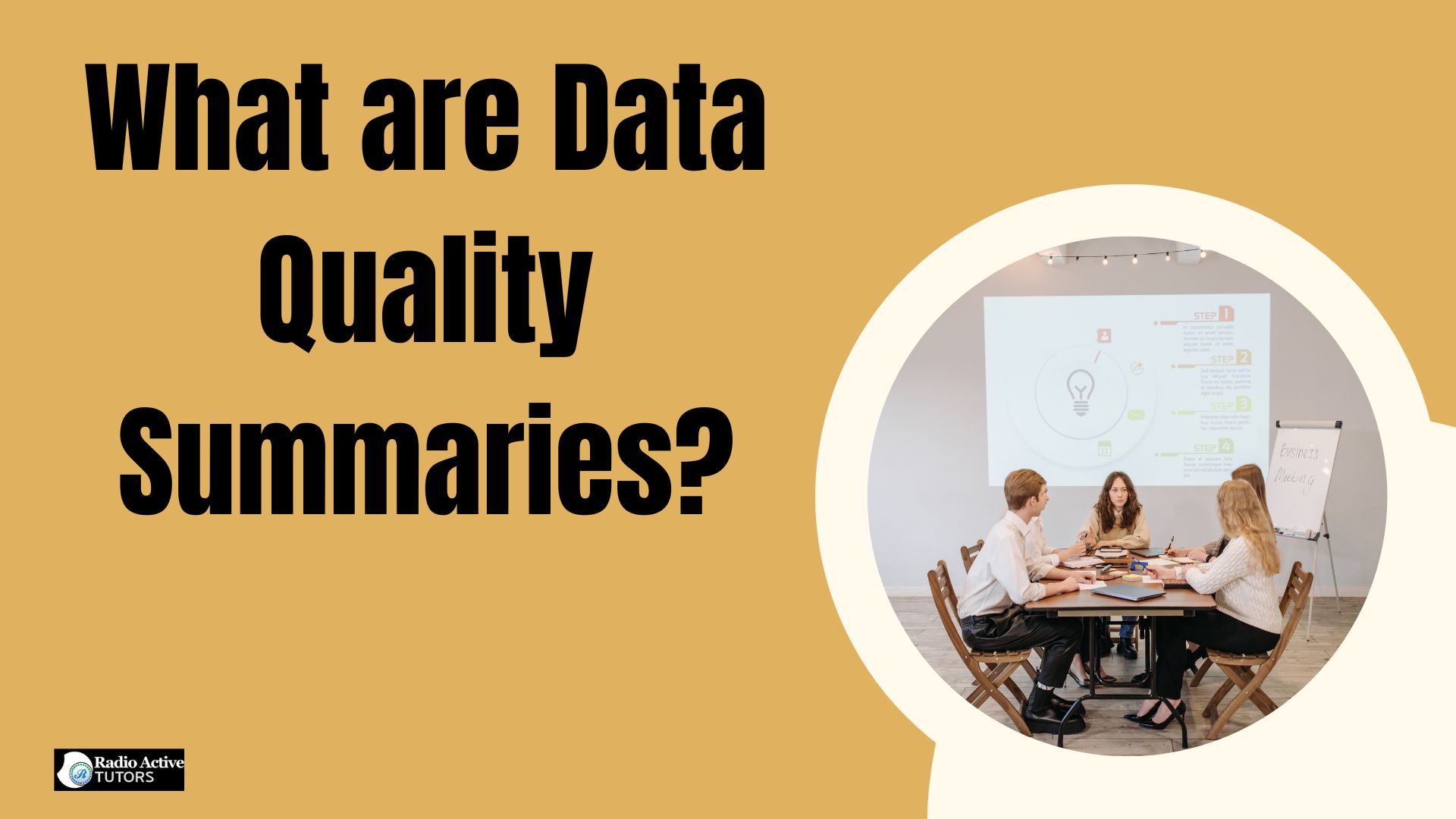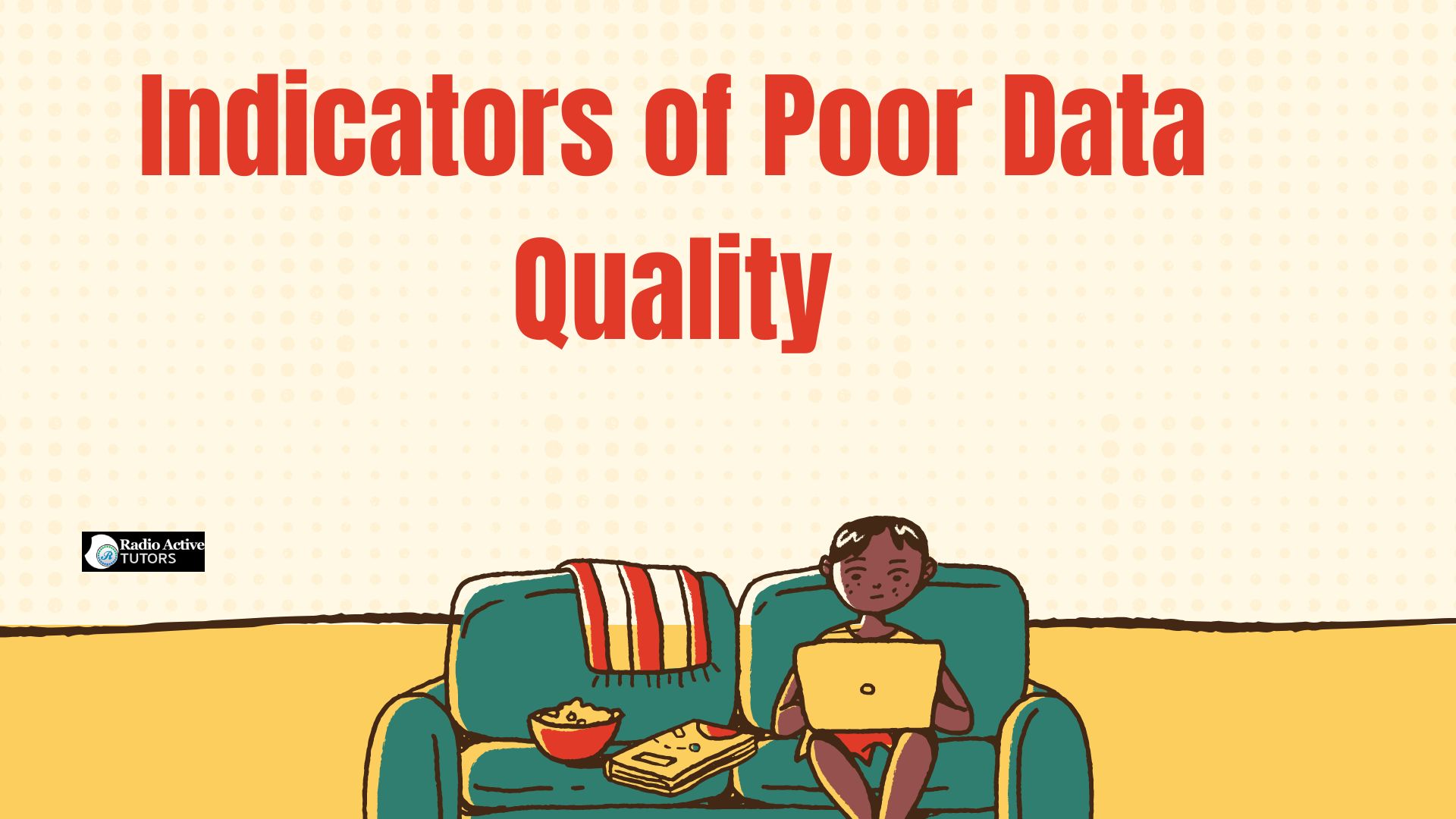Table of Contents
I. Introduction to Data Quality Summaries
II. Understanding Data Quality Summaries
III. Components of Data Quality Summaries
IV. Key Metrics and Indicators of Data Quality Summaries
V. Tools and Technologies for Data Quality Summaries
VI. Best Practices for Creating Data Quality Summaries
VII. Challenges in Maintaining Data Quality Summaries
VIII. Case Studies of Successful Data Quality Summaries Implementation
IX. Regulatory Compliance and Data Quality
X. Frequently Asked Questions (FAQs)
I. Introduction to Data Quality Summaries
- What are Data Quality Summaries?

Data Quality Summaries are concise reports that provide an overview of the quality of data within a dataset or system. They typically include key metrics and assessments related to the accuracy, completeness, consistency, and reliability of the data. These summaries are crucial for data analysts, scientists, and decision-makers to understand the strengths and weaknesses of the data they are working with. By highlighting potential issues and areas for improvement, Data Quality Summaries help ensure that the data used for analysis and decision-making is trustworthy and of high quality.
- Importance of Data Quality Summaries in Today’s Business Environment
The importance of Data Quality Summaries in today’s business environment cannot be overstated. In an era where data-driven decisions are crucial, these summaries play a vital role in ensuring the reliability and usability of data. They provide a clear and concise evaluation of data quality, helping businesses and organizations to understand the accuracy, completeness, and consistency of their datasets. This understanding is essential for making informed decisions, identifying trends, and predicting future outcomes. Moreover, Data Quality Summaries enable businesses to mitigate risks associated with poor data quality, thereby enhancing operational efficiency and customer satisfaction. Ultimately, these summaries empower organizations to leverage data effectively, driving innovation and maintaining a competitive edge in the market
II. Understanding Data Quality Summaries
- Definition of Data Quality Summaries
The definition of Data Quality Summaries lies in their role as concise reports that provide an overview of the quality of data within a dataset or system. These summaries encompass key metrics and assessments related to the accuracy, completeness, consistency, and reliability of the data. They serve as essential tools for data analysts, scientists, and decision-makers, offering insights into the strengths and weaknesses of the data they are analyzing. By highlighting potential issues and areas for improvement, Data Quality Summaries enable stakeholders to ensure that the data used for analysis and decision-making is trustworthy and of high quality. They play a critical role in maintaining data integrity and supporting effective business operations and strategic planning efforts
- Objectives and Goals of Data Quality Summaries
The objectives and goals of Data Quality Summaries are centered around providing a comprehensive understanding of the quality of data within a dataset or system. These summaries aim to identify and quantify the key aspects of data quality, such as accuracy, completeness, consistency, and reliability. By doing so, they enable data analysts, scientists, and decision-makers to make informed decisions based on trustworthy data. The goals include highlighting areas of improvement, ensuring data meets organizational standards and regulatory requirements, and ultimately enhancing the overall data integrity. Data Quality Summaries play a crucial role in supporting data-driven decision-making processes and fostering a culture of data-driven decision-making
- Benefits of Implementing Data Quality Summaries
Improved decision-making is one of the significant benefits of implementing Data Quality Summaries. By providing clear insights into the quality of data, these summaries enable organizations to make more informed and accurate decisions. They help in identifying and mitigating risks associated with poor data quality, ensuring that decisions are based on reliable information. Data Quality Summaries also facilitate the identification of trends and patterns within the data, which can uncover new opportunities or potential issues. Ultimately, by enhancing the reliability and trustworthiness of the data used for decision-making, organizations can improve operational efficiency, optimize resource allocation, and gain a competitive advantage in the marketplace
- Better Operational Efficiency

Better operational efficiency is a significant benefit of implementing Data Quality Summaries. These summaries help organizations streamline their processes by ensuring that the data used for operations is accurate, complete, and reliable. By identifying and addressing data quality issues early on, organizations can minimize errors and reduce the time spent on data cleansing and reconciliation tasks. This allows teams to focus more on analysis and decision-making rather than on data correction. Furthermore, improved data quality leads to better resource allocation and utilization, as well as enhanced productivity across different departments. Ultimately, Data Quality Summaries contribute to smoother operations and more efficient workflows, enabling organizations to achieve their goals more effectively
- Enhanced Customer Satisfaction
Enhanced customer satisfaction is a significant benefit of implementing Data Quality Summaries. By ensuring that the data used to serve customers is accurate and reliable, organizations can provide a better overall experience. Data Quality Summaries help in maintaining consistency in customer information, which leads to more personalized and targeted services. When customer data is accurate, organizations can respond quickly and effectively to customer inquiries and issues, improving the overall customer service experience.
Moreover, reliable data supports better customer relationship management and enables organizations to anticipate customer needs and preferences more accurately. As a result, implementing Data Quality Summaries not only enhances operational efficiency but also contributes to higher levels of customer satisfaction and loyalty, which are crucial for sustained business success
III. Components of Data Quality Summaries
Data accuracy is a critical component of Data Quality Summaries, ensuring that the information within a dataset is correct and free from errors. Accuracy measures the degree to which data correctly represents the real-world scenario it is intended to describe. In Data Quality Summaries, accuracy is assessed by comparing data values to known or expected values, identifying discrepancies, and quantifying the extent of errors. High data accuracy is essential for making informed decisions, conducting reliable analysis, and maintaining trust in the data. It supports organizations in delivering precise and reliable information to stakeholders, customers, and partners, ultimately contributing to improved decision-making and operational efficiency.

Data completeness is a fundamental component of Data Quality Summaries, ensuring that all required data elements are present within a dataset. It measures the extent to which data is whole, intact, and not missing any important parts. In Data Quality Summaries, completeness is assessed by comparing the expected number of data records or fields to the actual number present. Missing or incomplete data can lead to biased analysis, inaccurate reporting, and poor decision-making. Therefore, ensuring data completeness is crucial for organizations to have a comprehensive view of their operations, customers, and markets. It supports effective analysis, reporting, and compliance with regulatory requirements, ultimately enabling organizations to derive meaningful insights and make informed decisions based on reliable data.
IV. Key Metrics and Indicators of Data Quality Summaries
- Essential Metrics for Data Quality
The Data Completeness Rate is an essential metric for assessing the quality of data in Data Quality Summaries. It measures the percentage of expected data elements that are present and accounted for in a dataset. This metric is crucial because incomplete data can lead to inaccurate analyses and decisions. A high Data Completeness Rate indicates that the dataset is robust and comprehensive, allowing analysts and decision-makers to have confidence in the insights derived from the data.
In Data Quality Summaries, the Data Completeness Rate is typically calculated by comparing the total number of data records or fields that should be present against those that are actually present. This metric helps organizations understand the extent to which they have a full set of data, enabling them to fill gaps and ensure that their data is reliable and usable for making informed decisions.
The Data Accuracy Rate is a critical metric in Data Quality Summaries, measuring the proportion of correct data values in a dataset. It assesses the degree to which the data accurately reflects the real-world entities or events it is meant to represent. In Data Quality Summaries, the Data Accuracy Rate is typically calculated by comparing the number of accurate data values to the total number of data values in the dataset. A high Data Accuracy Rate indicates that the data is reliable and free from errors, ensuring that analyses and decisions based on this data are trustworthy.
This metric is essential for organizations to maintain the quality and integrity of their data, supporting accurate reporting, compliance with regulations, and informed decision-making processes. It enables stakeholders to have confidence in the data they use, facilitating effective business operations and strategic planning efforts.
Data Timeliness is a crucial metric in Data Quality Summaries, measuring the degree to which data is available within an appropriate timeframe to be relevant and useful for decision-making. It assesses how up-to-date the data is and whether it is available when needed. In Data Quality Summaries, Data Timeliness is typically evaluated by comparing the actual time when data becomes available with the expected or required time.
Timely data ensures that organizations can respond quickly to changes, make informed decisions, and maintain a competitive edge in the market. It supports operational efficiency, enhances customer satisfaction, and improves overall business performance. Monitoring Data Timeliness in Data Quality Summaries helps organizations identify and address delays in data availability, ensuring that stakeholders have access to current and actionable information for effective decision-making processes
Consistency of data is a fundamental metric in Data Quality Summaries, assessing the uniformity and coherence of data across different datasets or within a single dataset over time. It measures the extent to which data conforms to defined standards, formats, and rules. In Data Quality Summaries, consistency is evaluated by comparing data values against established criteria to identify any discrepancies or anomalies. High data consistency ensures that data is reliable and can be effectively used for analysis and decision-making. It supports accurate reporting, facilitates integration of data from multiple sources, and enhances the trustworthiness of organizational information.
Monitoring and maintaining data consistency in Data Quality Summaries is essential for ensuring data interoperability, reducing errors, and supporting the organization’s overall data governance and management efforts.
- Indicators of Poor Data Quality

Indicators of poor data quality are critical to identify in Data Quality Summaries, as they can significantly impact decision-making and business outcomes. Some key indicators include data inconsistency, where data values differ across sources or over time, leading to discrepancies in analysis and reporting. Another indicator is data incompleteness, where important data elements are missing, making it difficult to derive accurate insights. Data inaccuracy is another major indicator, involving incorrect data values that can skew analyses and lead to misguided decisions.
Additionally, poor data timeliness can hinder decision-making by providing outdated information. These indicators highlight the importance of robust data quality assessment and management practices in Data Quality Summaries to ensure that data is reliable, consistent, complete, accurate, and timely for effective use in organizational processes and decision-making.
V. Tools and Technologies for Data Quality Summaries
- Data Quality Management Tools
- Popular Tools and Their Features
Popular tools in data quality management offer a range of features that are invaluable for creating effective Data Quality Summaries. One widely used tool is Informatica Data Quality, which provides capabilities for profiling, cleansing, and monitoring data quality. It includes features such as data profiling to analyze the structure and content of data, identifying issues like duplicates or inconsistencies. Informatica also offers data cleansing functionality to standardize and correct data, ensuring it meets defined quality standards.
Another popular tool is Talend Data Quality, which offers data profiling, data cleansing, and data enrichment features. Talend allows users to profile data to understand its quality, cleanse data to ensure accuracy and consistency, and enrich data with additional information. These tools support the creation of Data Quality Summaries by providing insights into data quality metrics, identifying areas for improvement, and ensuring that data is reliable and consistent for business analysis and decision-making purposes
- How to Choose the Right Tool for Your Organization
Choosing the right tool for data quality management is crucial for creating effective Data Quality Summaries that support business objectives. When selecting a tool, consider several factors to ensure it meets the specific needs of your organization. First, assess the tool’s capabilities, such as data profiling, cleansing, enrichment, and monitoring, to ensure it aligns with your data quality goals. Evaluate whether the tool supports integration with your existing systems and data sources, as well as compatibility with your organization’s technology stack. Consider the scalability and performance of the tool, especially if you have large volumes of data or complex data environments.
Additionally, review the user interface and ease of use, as well as the level of support and training available. Finally, consider the cost and licensing model to ensure it fits within your budgetary constraints. By carefully evaluating these factors, you can choose a data quality management tool that will enable you to create comprehensive and reliable Data Quality Summaries, supporting informed decision-making and driving business success
VI. Best Practices for Creating Data Quality Summaries
- Establishing Data Quality Standards
Establishing data quality standards is a critical best practice for creating Data Quality Summaries that are reliable and useful for decision-making. Data quality standards define the criteria and benchmarks against which data is assessed and measured. These standards typically include metrics such as accuracy, completeness, consistency, timeliness, and validity. To establish effective data quality standards, organizations should involve stakeholders from across different departments to ensure that the standards meet the needs of all users.
Standards should be documented and communicated clearly to all relevant parties to ensure consistent understanding and application. Regular reviews and updates of data quality standards are essential to adapt to changing business needs, evolving data sources, and new regulatory requirements. By establishing and adhering to data quality standards, organizations can ensure that their Data Quality Summaries provide accurate, reliable, and actionable insights, supporting informed decision-making and driving business success
- Implementing Data Governance

Implementing data governance is a fundamental best practice for creating Data Quality Summaries that are robust and reliable. Data governance involves establishing policies, processes, and roles to ensure that data is managed effectively throughout its lifecycle. It provides a framework for defining who has access to data, how data is used, and how data quality is maintained. Key components of effective data governance include data stewardship, which assigns responsibility for data quality to specific individuals or teams, and data management practices that ensure data is accurate, consistent, and secure.
Implementing data governance also involves creating data quality frameworks, standards, and procedures that guide the creation and maintenance of Data Quality Summaries. By implementing robust data governance practices, organizations can improve data quality, increase confidence in data-driven decisions, and mitigate risks associated with poor data quality, ultimately supporting organizational goals and objectives
- Data Quality Improvement Strategies
Data quality improvement strategies are essential best practices for creating effective Data Quality Summaries that support accurate decision-making. These strategies involve a systematic approach to identifying and addressing data quality issues. One strategy is data profiling, which helps to understand the structure, content, and quality of data. Another strategy is data cleansing, which involves correcting errors, removing duplicates, and standardizing formats to improve data accuracy and consistency.
Data enrichment is another strategy that involves enhancing existing data with additional information to improve its value and usefulness. Implementing data quality rules and validation checks ensures that data meets predefined quality standards. Regular monitoring and reporting on data quality metrics are essential to track improvements over time and identify areas for further enhancement. By implementing these data quality improvement strategies, organizations can ensure that their Data Quality Summaries are reliable, trustworthy, and provide actionable insights for informed decision-making.
VII. Challenges in Maintaining Data Quality Summaries
Maintaining Data Quality Summaries presents several challenges that organizations must address to ensure the reliability and effectiveness of their data management practices. One significant challenge is ensuring data accuracy and consistency across various systems and data sources. Data from different sources may have varying formats, structures, and quality levels, making it difficult to maintain uniformity and reliability in Data Quality Summaries. Another challenge is dealing with data volume and complexity, as organizations accumulate large amounts of data that must be processed and analyzed to create meaningful summaries.
Additionally, data governance and stewardship play a crucial role in maintaining Data Quality Summaries, requiring clear policies, procedures, and responsibilities for data management. Data security and privacy concerns also present challenges, as organizations must ensure that sensitive information is protected and compliant with regulatory requirements. Lastly, keeping Data Quality Summaries up-to-date and relevant in a rapidly evolving technological landscape requires ongoing monitoring, assessment, and adaptation of data quality standards and practices. Overcoming these challenges is essential to harnessing the full potential of Data Quality Summaries to support informed decision-making and drive business success.
VIII. Case Studies of Successful Data Quality Summaries Implementation
Several organizations have successfully implemented Data Quality Summaries to enhance their data management practices and decision-making processes. One notable case study involves a global financial services firm that implemented Data Quality Summaries to improve the quality and reliability of their financial data. By implementing data profiling, cleansing, and validation processes, they were able to identify and rectify inconsistencies and inaccuracies in their data.
This enabled more accurate financial reporting and regulatory compliance, leading to increased stakeholder trust and confidence. The implementation of Data Quality Summaries also facilitated better risk management and strategic decision-making, supporting the firm’s growth and competitiveness in the financial sector.
IX. Regulatory Compliance and Data Quality
Regulatory compliance is a critical aspect of Data Quality Summaries, ensuring that organizations adhere to legal and industry standards regarding data quality and management. Many industries, such as healthcare, finance, and telecommunications, are subject to stringent regulations that govern the accuracy, privacy, and security of data. Data Quality Summaries play a crucial role in regulatory compliance by providing transparency into data quality metrics, such as accuracy, completeness, and timeliness.
By implementing Data Quality Summaries, organizations can ensure that they meet regulatory requirements, such as GDPR, HIPAA, or SOX, which require accurate and reliable data for reporting and decision-making. These summaries help organizations identify and mitigate data quality issues early, ensuring that they operate within legal boundaries and maintain the trust of customers, stakeholders, and regulatory bodies. Thus, Data Quality Summaries are essential tools for maintaining regulatory compliance and supporting sustainable business practices.
X. Frequently Asked Questions (FAQs)
- What are data quality summaries and why are they important?
- How can data quality summaries improve business decision making?
- What are the key components of data quality?
- How do you measure data accuracy and completeness?
- What are some common challenges in maintaining data quality?
- Which tools are recommended for managing data quality summaries?
- How can organizations ensure compliance with data regulations through data quality summaries?
- What are the future trends in data quality management?
